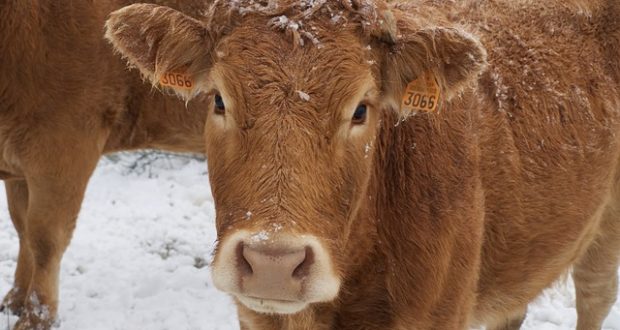Blog
6 dirty, brilliant ways to water animals in winter
animals
Watering animals in winter can be a huge headache for both small houses and farmers on a large scale, especially if you are out of the network. Some animals, such as dairy cows, need a lot of water to maintain production. Producing over 10 gallons of milk a day means that they have to drink much more than 10 gallons of water. At the same time, water can be dangerous and create slippery conditions for animals that are susceptible to climbing and spilling buckets.
The most common tactics used by farm animal owners is an attempt to stop water from freezing. This may be more discouraging than you realize. Commercial farms water their animals in centralized tanks that can be heated electrically. However, this may not be an option for a small -scale farm or outside the network. Propane heats are one potentially good, automatic option outside the network. Unfortunately, they can be dangerous if the pilot light goes out or if they are not properly protected from the animals themselves. Many other options have been replaced here.
Diatomaceous Earth: completely natural de-farm of farm animals!
But there are several technologically low ways to stop water from freezing without a large investment.
1. Pulling warm water
For some animals, the best way to make sure they have water is to pull fresh water every day. Chickens and rabbits are small and require relatively little water a day. They can be easily managed outside the network, bringing them fresh water every day. For larger animals, you will want to use one of the low technology strategies below to keep water longer. Which means that you will only have to water them every few days or you will have to provide a small amount of water every day, saving a lot of work and time.
2. Raised water platforms
Cold soil robs heat from the buckets on the water placed directly on it. Raising the watering station up to a few inches above the ground can stop it from freezing in milder weather. Try a suspended water system for chickens. Or maybe the bucket slammed to the wall of the barn for larger animals, such as pigs. Even a few inches can have a big difference.
3. Watering of animals in the room
animals
By watering animals in the room, even in an unheated structure, protection against the elements will keep water in a liquid state much longer. The insulation of both the structure and the water tank will delay the freezing of water even more. This may mean that you need to bring fresh liquid water every few days.
4. Passive heating of the compost
Water can also be heated passively with an active compost. Place the water trough near the corner of the structure, and then each time the pen is cleaned, throw the manure behind and around the bodies, so that the water is insulated with manure – and maybe even heated, if the manure is in the right balance to make it hot. Remember to keep a clean path to the water, gathering only on three sides of the trough.
5. Watering in feed
In the case of animals such as pigs and chickens, wetting food in a warm mash is a great way to prevent dehydration during a dry reason, and help reduce power waste. Feeding pigs break down and most of them can be lost on dust if it is not wet in suspension. Adding a bucket of hot water to power will encourage animals to eat all feed while maintaining them hydration. But they can’t get quite needed water in feeding, so making sure they have a good supply of liquid water (or snow, if right) is still important.
6. Watering animals with snow
Knowing that deer is experiencing all winter outside without a liquid water source, he can encourage you to provide snow with animals to supplement their water supply. As long as there is a lot of fresh snow, which has not been packed in ice or covered with droppings, many animals, including horses and ducks, can do quite well. Coastal animals, such as chickens, can refuse to eat snow, even until the death of dehydration before leaving Coop’s heat. You must assess individual cases based on temperament and breed of animals. Even if they eagerly eat snow, it is still a good idea that brings a small bucket of hot water every day to make sure they remain well hydraulic. Milk animals producing a significant amount of additional liquid in the form of milk will still require daily supplementation with a large water supply.
When not to water
Believe or not, there are some animals that should not be watered when the temperatures are below zero. Ducks and geese love fresh water, but use it more for bathing than drinking. Regardless of how little output, ducks can throw on it to create a puddle for a bath. This will temporarily satisfy them, but if the temperatures are more than a few degrees below zero, they will probably create an ice trail. Basically, sticking to the ground with feathers and chest feet. When they realize their troubles, they will knock down and hurt, often deadly. To avoid these threats, supplying fresh water to water birds only on days when temperatures are above freezing. Otherwise, make sure that they have enough fresh snow, even if it means bringing it from outside their yard.
Do you have any other tips that work well for you? Share in the comments below.

